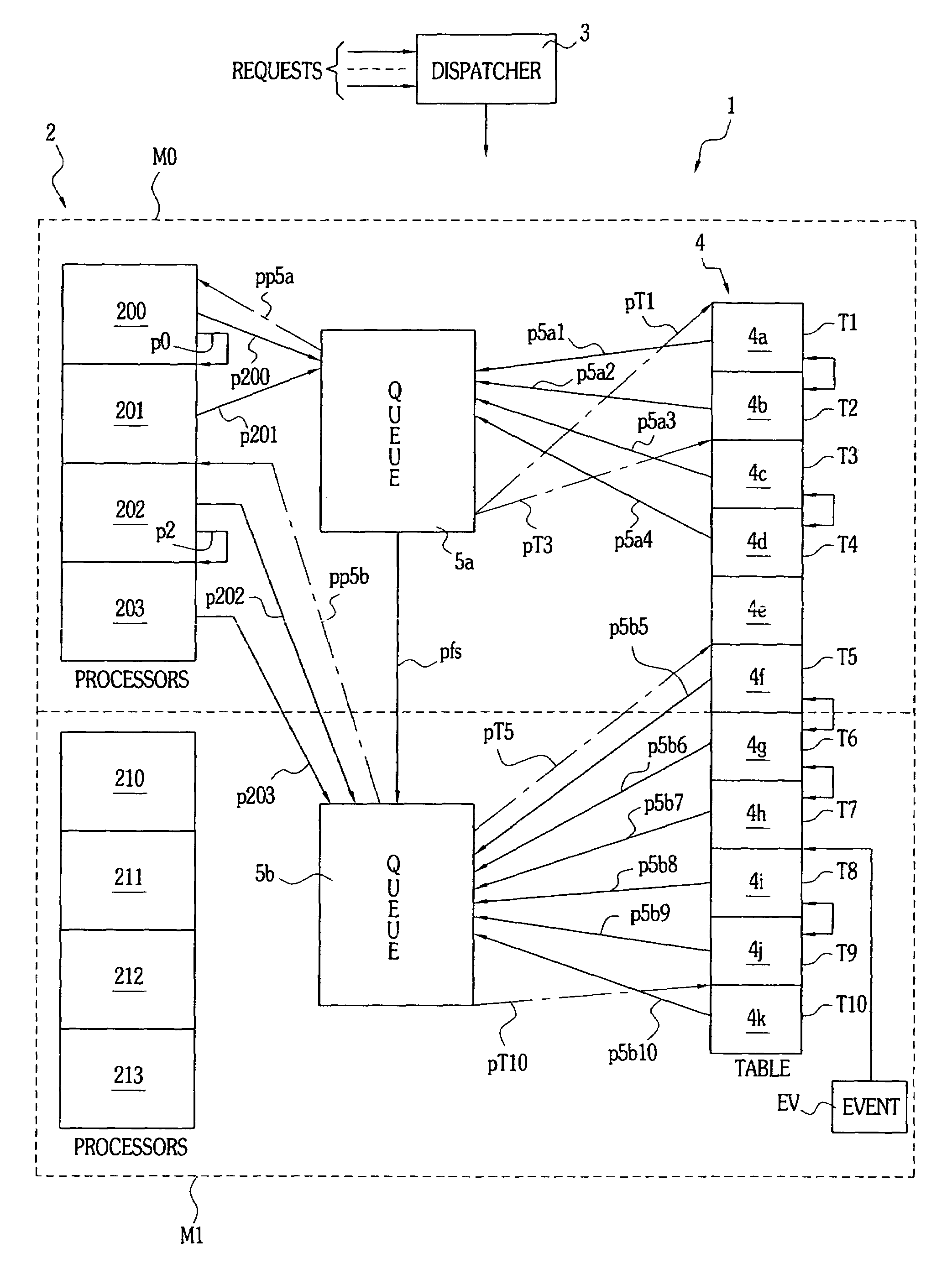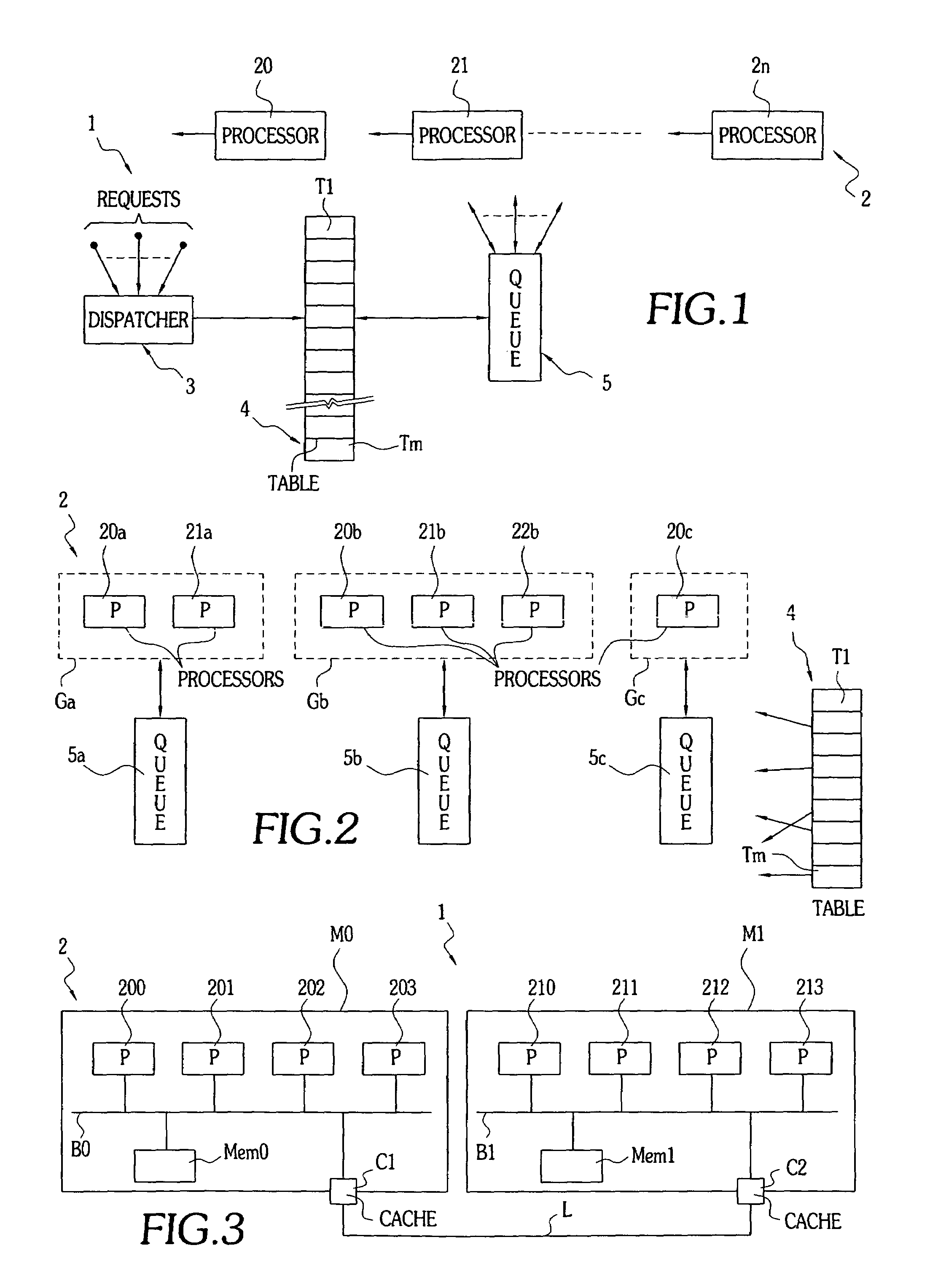Process for improving the performance of a multiprocessor system comprising a job queue and system architecture for implementing the process
a multi-processor system and process technology, applied in the field of process for improving the performance of a multi-processor data processing system, can solve the problems of inability to handle such an operation naturally, increasing the cost of system global performance degradation, and not being able to solve algorithms without drawbacks
- Summary
- Abstract
- Description
- Claims
- Application Information
AI Technical Summary
Benefits of technology
Problems solved by technology
Method used
Image
Examples
first embodiment
[0058]Thus, according to an important characteristic of the invention, a first embodiment provides for a partitioning of the single queue, of and the locks associated with it, into several queue-and-lock sets.
[0059]FIG. 2 schematically illustrates an exemplary architecture of this type. The system 1, as before, comprises several processors. However, these processors have been organized into processor groups, for example three groups referenced Ga through Gc. Each group, Ga through Gc, may or may not comprise an identical number of processors. In FIG. 2, for example, it has arbitrarily been assumed that the group Ga comprises two processors 20a and 21a, the group Gb, three processors 20b through 22b, and the group Gc, only one processor 20c.
[0060]Moreover, according to a first important characteristic of the invention the single queue (FIGS. 1: 5) is then divided into a plurality of queues. More precisely, the number of queues is equal to the number of processor groups, or three que...
second embodiment
[0091]The operations required to obtain this multiple queue configuration, generally performed only once, constitute a phase that could be described as preliminary. In the operating mode, a (re-)balancing of the tasks among queues or of the workload among processors is obtained by means of three mechanisms, which specifically constitute three variants of the It must be noted that these three mechanisms can coexist and are not mutually exclusive. On the contrary, in a preferred embodiment, these three mechanisms, or at least the first two, which produce the best results in terms of the objectives pursued by the invention, are combined, as will be explained below.
[0092]According to the first variant of embodiment, a balancing of the tasks is obtained by distributing them in optimized fashion among the various queues as they “physically” appear, and not simply in the above-mentioned “round robin” fashion. The precise method for choosing a queue will be explained below.
[0093]According ...
PUM
 Login to View More
Login to View More Abstract
Description
Claims
Application Information
 Login to View More
Login to View More - R&D
- Intellectual Property
- Life Sciences
- Materials
- Tech Scout
- Unparalleled Data Quality
- Higher Quality Content
- 60% Fewer Hallucinations
Browse by: Latest US Patents, China's latest patents, Technical Efficacy Thesaurus, Application Domain, Technology Topic, Popular Technical Reports.
© 2025 PatSnap. All rights reserved.Legal|Privacy policy|Modern Slavery Act Transparency Statement|Sitemap|About US| Contact US: help@patsnap.com



